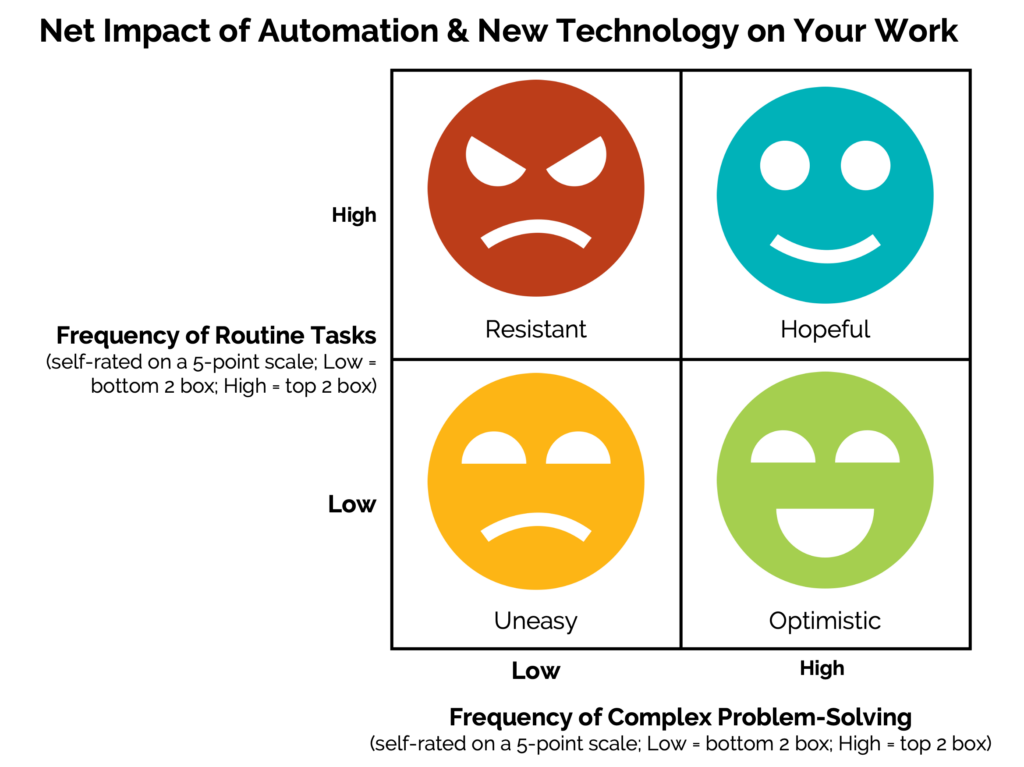
by Robyn Bolton | Mar 11, 2025 | Innovation, Leadership, Stories & Examples
Ideas and insights can emerge from the most unexpected places. My mom was a preschool teacher, and I often say that I learned everything I needed to know about managing people by watching her wrangle four-year-olds. But it only recently occurred to me that the most valuable business growth lessons came from my thoroughly unremarkable years playing the flute in middle school.
6th Grade: Following the Manual and Falling Flat
Sixth grade was momentous for many reasons, one being that that was when students could choose an instrument and join the school band. I chose the flute because my friends did, and there was a rumor that clarinets gave you buck teeth—I had enough orthodontic issues already.
Each week, our “jill of all trades” teacher gathered the flutists together and guided us through the instructional book until we could play a passable version of Yankee Doodle. I practiced daily, following the book and playing the notes, but the music was lifeless, and I was bored.
7th Grade: Finding Context and Direction
In seventh grade, we moved to full band rehearsals with a new teacher trained to lead an entire band (he was also deaf in one ear, which was, I think, a better qualification for the job than his degree). Hearing all the instruments together made the music more interesting and I was more motivated to practice because I understood how my part played in the whole. But I was still a very average flutist.
To help me improve, my parents got me a private flute teacher. Once a week, Mom drove me to my flute teacher’s house for one-on-one tutoring. She corrected mistakes when I made them, showed me tips and tricks to play faster and breathe deeper, and selected music I enjoyed playing. With her help, I became an above-average flutist.
Post-Grad: 5 Business Truths from Band Class
I stopped playing in the 12th grade. Despite everyone’s efforts, I was never exceptional—I didn’t care enough to do the work required.
Looking back, I realized that my mediocrity taught me five crucial lessons that had nothing to do with music:
- Don’t do something just because everyone else is. I chose the flute because my friends did. I didn’t choose my path but followed others—that’s why the music was lifeless.
- Following the instruction manual is worse than doing nothing. You can’t learn an instrument from a book. Are you sharp or flat? Too fast or slow? You don’t know, but others do (but don’t say anything).
- Part of a person is better than all of a book. Though spread thin, the time my teachers spent with each instrumental section was the difference between technically correct noise and tolerable music.
- A dedicated teacher beats a distracted one. Having someone beside me meant no mistake went uncorrected and no triumph unrecognized. She knew my abilities and found music that stretched me without causing frustration.
- If you don’t want to do what’s required, be honest about it. I stopped wanting to play the flute in 10th grade but kept going because it was easier to maintain the status quo. In hindsight, a lot of time, money, and effort would have been saved if I stopped playing when I stopped caring.
The Executive Orchestra: What Grade Are You In?
How many executives remain in sixth grade—following management fads because of FOMO, buying books, handing them out, and expecting magic? And, when that fails, hiring someone to do the work for them and wondering why the music stops when the contract ends?
How many progress to seventh grade, finding someone who can teach, correct, and celebrate their teams as they build new capabilities?
How do what I should have done in 10th grade and be honest about what they are and aren’t willing to do, spending time and resources on priorities rather than maintaining an image?
More importantly, what grade are you in?

by Robyn Bolton | Mar 4, 2025 | Automation & Tech, Leadership
Imagine a manufacturing company. On the factory floor, machines whirl and grind, torches flare up as welding helmets click closed, and parts and products fall off the line and into waiting hands or boxes, ready to be shipped to customers. Elsewhere, through several doors and a long hallway, you leave the cacophony of the shop floor for the quiet hum of the office. Computers ping with new emails while fingers clickety-clack across the keyboard. Occasionally, a printer whirs to life while forcing someone to raise their voice as they talk to a customer on the other end of the phone.
Now, imagine that you ask each person whether AI and automation will positively or negatively affect their jobs. Who will champion new technology and who will resist it?
Most people expect automation acceptance to be separated by the long hallway, with the office workers welcoming while the factory workers resist.
Most people are wrong.
The Business Case for Problem-Solving Job Design
Last week, I wrote about findings from an MIT study that indicated that trust, not technology, is the leading indicator of whether workers will adopt new AI and automation tools.
But there’s more to the story than that. Researchers found that the type of work people do has a bigger influence on automation perception than where they do it. Specifically, people who engage in work requiring high levels of complex problem-solving alongside routine work are more likely to see the benefit of automation than any other group.
Or, to put it more simply

While it’s not surprising that people who perform mostly routine tasks are more resistant than those who engage in complex tasks, it is surprising that this holds true for both office-based and production-floor employees.
Even more notable, this positive perception is significantly higher for complex problem solvers vs. the average across all workers::
- Safety: 43% and 41% net positive for office and physical workers, respectively (vs. 32% avg)
- Pay: 27% and 25% net positive for physical and office workers, respectively (vs. 3.9% avg)
- Autonomy: 33% net positive for office workers (vs. 18% average)
- Job security: 25% and 22% net positive for office and physical workers, respectively (vs. 3.5%)
Or, to put it more simply, blend problem-solving into routine-heavy roles, and you’ll transform potential technology resistors into champions.
3 Ways to Build Problem-Solving Into Any Role
The importance of incorporating problem-solving into every job isn’t just a theory – it’s one of the core principles of the Toyota Production System (TPS). Jidoka, or the union of automation with human intelligence, is best exemplified by the andon cord system, where employees can stop manufacturing if they perceive a quality issue.
But you don’t need to be a Six-Sigma black belt to build human intelligence into each role:
- Create troubleshooting teams with decision authority
Workers who actively diagnose and fix process issues develop a nuanced understanding of where technology helps versus hinders. Cross-functional troubleshooting creates the perfect conditions for technology champions to emerge.
- Design financial incentives around problem resolution
The MIT study’s embedded experiment showed that financial incentives significantly improved workers’ perception of new technologies while opportunities for input alone did not. When workers see personal benefit in solving problems with technology, adoption accelerates.
- Establish learning pathways connected to problem complexity
Workers motivated by career growth (+33.9% positive view on automation’s impact on upward mobility) actively seek out technologies that help them tackle increasingly complex problems. Create visible advancement paths tied to problem-solving mastery.
Innovation’s Human Catalyst
The most powerful lever for technology adoption isn’t better technology—it’s better job design. By restructuring roles to include meaningful problem-solving, you transform the innovation equation.
So here’s the million-dollar question every executive should be asking: Are you designing jobs that create automation champions, or are you merely automating jobs as they currently exist?

by Robyn Bolton | Feb 18, 2025 | Innovation, Leadership, Metrics, Tips, Tricks, & Tools
Innovation is undergoing a metamorphosis, and while it may seem like the current goo-stage is the hard part (it’s certainly not easy!), our greatest challenge is still ahead. Because while we may emerge as beautiful butterflies, we still need to get buy-in for change from a colony of skeptical caterpillars who’ve grown weary of transformation talk.
The Old Playbook Is Dead, Too
Picture this: A butterfly lands, armed with PowerPoint slides about “The Future of Leaf-Eating” and projections showing “10x Nectar Collection Potential.” The caterpillars stare blankly, having seen this show before.
The old approach – big presentations, executive sponsorship, and promises of massive returns within 24 months – isn’t just ineffective. It’s harmful. Each failed transformation makes the next one harder, turning your caterpillars more cynical and more determined to cling to their leaves.
The Secret Most Change Experts Miss
Butterflies don’t convince caterpillars to transform by showing off their wings. They create conditions where transformation feels possible, necessary, and safe. Your job isn’t to sell the end state – it’s to help others see their own potential for change.
Here’s how:
Start With the Hungriest Caterpillars
Find those who feel the limitations of their current state most acutely. They’re not satisfied with their current leaf, and they’re curious about what lies beyond. These early adopters become your first chrysalis cohort.
Make it About Their Problems, Not Your Vision
Instead of talking about transformation, focus on specific pain points. “Wouldn’t it be easier to reach that juicy leaf if you could fly?” is more compelling than “Flying represents a paradigm shift in leaf acquisition strategy.”
Build a Network of Proof
Every successful mini-transformation creates evidence that change is possible. When one caterpillar successfully navigates their chrysalis phase, others pay attention. Let your transformed allies tell their stories.
Set Realistic Expectations
Metamorphosis takes time and isn’t always pretty. Be honest about the goo phase – that messy middle where things fall apart before they come together. This builds trust and prepares people for the real journey, not the sanitized version.
Where to Start
- Identify your first chrysalis cohort – the people already feeling the limits of their current state
- Focus on solving immediate problems that showcase the benefits of change
- Document and share small victories, letting others tell their transformation stories
- Create realistic timelines that acknowledge both quick wins and longer-term metamorphosis
What’s your experience? Have you successfully guided a transformation without relying on buzzwords and fancy presentations? Drop your stories in the comments.
After all, we’re all just caterpillars and butterflies helping each other find our wings.

by Robyn Bolton | Feb 12, 2025 | Innovation, Leadership
When times get tough, the first things most companies cut are the “luxuries.” That includes their innovation teams. But as companies dismantle their labs, teams, and other structures, a crucial question emerges: Who’s working on growth?
Cutting innovation teams doesn’t just cut a branch off the org chart. It eliminates capabilities that are fundamental to sustaining and growing a business and culture.
So why throw the baby out with the bathwater? Here’s a scenario that might sound familiar: Your innovation team created something brilliant. The prototype works, early users love it, and the business case is solid. But six months later, it’s gathering dust because no one in the core business knew how to—or wanted to—move it forward.
This isn’t a failure of innovation. It’s a failure of integration.
Wait, I thought integrating innovation with the core business was bad
The traditional innovation team structure – a separate unit with its own space, processes, and culture – solved one problem but created another.
As innovation teams were given the freedom to think differently, they were also given shiny, new, fun, and amenity-filled spaces cordoned off from everyone else. Meanwhile, “everyone else” was stuck in their usual offices and doing the usual things that keep the business running and fund the innovation team’s luxe life.
The resulting us-versus-them mentality fueled resentment, making it easy for “everyone else” to stonewall the innovation team’s efforts by pointing out flaws, uncertainties, and risks.
To be fair, they weren’t doing this to be mean – they were protecting the business. The innovators, meanwhile, grew frustrated, sought help from higher-ups who were happy to help until times got tough and cuts had to be made.
So, one team should work on both innovation and the core business?
Just like we need multiple words to describe the what and why of innovation, we need different operating models that embed innovation capabilities across the organization while protecting the space for them to flourish.
Here’s what it looks like:
- For Core Improvements, let your operational teams lead. They know the problems best, but give them innovation tools and methods. Think of this as equipping your existing workforce with new superpowers, not replacing them with superheroes.
- For Adjacent Expansions, create hybrid teams that combine operational experience with innovation expertise. When expanding into new markets or launching new products, you need both an innovative mindset and operational know-how. Neither alone is sufficient.
- For Radical Reinvention, you still need dedicated teams—but not isolated ones. Their job is to create offerings that reinvent the company and the culture that enables everyone to participate. Establish bridges that connect them with business units and enforce quarterly meetings to share progress, insights, and tools.
This isn’t theory.
Companies like Amazon have been doing this for years with their “working backwards” innovation process used by all teams, not just a special innovation unit. When I worked at P&G, the brand teams worked on core improvements, the New Business Development teams (where I worked) physically sat next to the brand teams and worked on Adjacent expansion, and the radical reinvention teams were co-located with R&D at the technical centers.
Put it into practice
Here’s where to start:
- Map your innovation portfolio to understand what types of innovation you need to hit your goals
- Match your team structures to your innovation types
- Start embedding innovation capabilities across the organization
- Create clear paths for innovations to move from idea to implementation
The transition isn’t easy. It requires rethinking roles and reimagining how innovation happens in your organization. But the alternative – watching your innovation investments evaporate because they can’t cross the bridge back to the core business – is far more painful.
What’s your experience? Drop your stories and strategies in the comments. Let’s figure this out together.

by Robyn Bolton | Jan 22, 2025 | Innovation, Leadership, Metrics, Stories & Examples
“Consider this question: If workers are hobbled by 1,000 rules, does it make a meaningful difference to reduce them to only 900?”
The answer is No. In fact, this is precisely why most attempts at fighting bureaucracy fail – and why true transformation requires starting completely fresh.
Bill Anderson, CEO of Bayer, knows this and isn’t afraid to admit it. When he took the helm in June 2023, he discovered a company paralyzed by bureaucracy. Instead of trying to optimize the system, he looked at the company’s “1,362 pages” of employee rules and knew the entire structure needed to change.
Breaking the Stranglehold
As Anderson stated in Fortune, “There was a time for hierarchical, command-and-control organizations – the 19th century, to be exact, when many workers were illiterate, information traveled at a snail’s pace, and strict adherence to rules offered the competitive advantage of reliability.”
The modern reality is different. Today’s Bayer employs highly skilled experts, operates at digital speed, and competes in markets where, as Anderson observes, “the most reliable companies are the most dynamic.”
The challenge wasn’t just the encyclopedic rulebook. The organization’s “12 levels of hierarchy” created what Anderson called “unnecessary distance between our teams, our customers, and our products.” In today’s innovation-driven market, this industrial-age structure threatened the company’s future.
Unleashing Innovation
Anderson’s solution? “Dynamic Shared Ownership” – a radical model that puts 95% of decision-making in the hands of the people actually doing the work. Instead of annual budgets and endless approvals, self-directed teams work in 90-day sprints with the autonomy to make real-time decisions.
The results are already showing. Take Vividion, Bayer’s independently operated subsidiary. Operating in small, autonomous teams, they went from FDA approval to first patient dosing in just six weeks. They’re now on track to produce one or two new drug candidates for clinical testing every year.
Speed Becomes Reality
The impact extends across the organization. Bayer’s scientists have transformed their plant breeding process, reducing cycles from “five years down to merely four months.”
In the consumer health division, teams have accelerated their development timelines significantly, reducing product launch schedules “by up to nine months” in Asia. Within their first two months under the new system, these teams generated millions in additional value.
While financial markets remain uncertain about this transformation, one crucial metric suggests it’s working: employee retention has improved. The scientists, researchers, and product developers – the people doing the innovative work – are showing their confidence in this dramatic shift toward autonomous operation.
Why This Matters & What to do Next
For most of us, the question isn’t whether our organization has too much bureaucracy – it almost certainly does. The question is: what are you going to do about it?
Try this – Create a small, autonomous team with a 90-day mission. Give them real decision-making power and see what they can accomplish when freed from bureaucratic constraints.
Remember Anderson’s key insight: reducing rules from 1,000 to 900 won’t create meaningful change. Real transformation requires the courage to fundamentally rethink how work gets done.
For anyone who’s ever felt the soul-crushing weight of bureaucracy, Bayer’s radical reinvention offers hope. Maybe the path to innovation isn’t through better rules and processes, but through the courage to trust in human potential.

by Robyn Bolton | Jan 15, 2025 | Innovation, Leadership, Stories & Examples
I firmly believe that there are certain things in life that you automatically say Yes to. You do not ask questions or pause to consider context. You simply say Yes:
- Painkillers after a medical procedure
- Warm blankets
- The opportunity to listen to brilliant people talk about things that fascinate them.
So, when asked if I would like to attend an Executive Briefing curated by MIT’s Industrial Liaison Program, I did not ask questions or pause to check my calendar. I simply said Yes.
I’m extremely happy that I did because what I heard blew my mind.
Lean is the enemy of learning
When Ben Armstrong, Executive Director of MIT’s Industrial Performance Center and Co-Lead of the Work of the Future Initiative, said, “To produce something new, you need to create a lot of waste,” I nearly lept out of my chair, raised my arms, and shouted “Amen brother!”
He went on to tell the story of a meeting between Elon Musk and Toyota executives shortly after Musk became CEO. Toyota executives marveled at how quickly Tesla could build an EV and asked Musk for his secret. Musk gestured around the factory floor at all the abandoned hunks of metal and partially built cars and explained that, unlike Toyota, which prided itself on being lean and minimizing waste, Tesla engineers focused on learning – and waste is a required part of the process.
We decide with our hearts and justify with our heads – even when leasing office space
John E. Fernández, Director of MIT’s Environmental Solutions Initiative, shared an unexpected insight about selling sustainable buildings effectively. Instead of hard numbers around water and energy cost savings, what convinces companies to pay the premium for Net Zero environments is prestige. The bragging rights of being a tenant in Winthrop Center, Boston’s first-ever Passive House office building, gave developers a meaningful point of differentiation and justified higher-than-market-rate rents to future tenants like McKinsey and M&T Bank.
49% of companies are Silos and Spaghetti
I did a hard eye roll when I saw Digital Transformation on the agenda. But Stephanie Woerner, Principal Research Scientists and Executive Director for MIT’s Center for Information Systems Research, proved me wrong by explaining that Digital Transformation requires operational excellence and customer-focused innovation.
Her research reveals that while 26% of companies have evolved to manage both innovation and operations, operate with agility, and deliver great customer experiences, nearly half of companies are stuck operating in silos and throwing spaghetti against the wall. These “silo and spaghetti companies” are often product companies rife with complex systems and processes that require and reward individual heroics to make progress.
What seems like the safest option is the riskiest
How did 26% of companies transform while the rest stayed stuck or made little progress? The path forward isn’t what you’d expect. Companies that go all-in on operational excellence or customer innovation struggle to shift focus and work in the other half of the equation. But doing a little bit of each is even more risky because the companies often wait for results from one step before taking the next. The result is a never-ending transformation slog that is eventually abandoned.
Academia is full of random factoids
They’re not random to the academics, but for us civilians, they’re mainly helpful for trivia night:
- 50% of US robots are used in the automotive industry
- <20% of manufacturing job descriptions require digital skills (yes, that includes MS Office)
- Data centers will account for 8-21% of global energy demand by 2030
- Energy is 10% of the cost of running a data center but 90% of the cost of mining bitcoin
- Cities take up 3% of the earth’s surface, contain 33% of the population, account for 70% of global electricity consumption, and are responsible for 75% of CO2 emissions
Why say Yes
When brilliant people talk about things they find fascinating, it’s often because those things challenge conventional wisdom. The tension between lean efficiency and innovative learning, the role of emotion in business decisions, and the risks of playing it too safe all point to a fascinating truth: sometimes the most counterintuitive path forward is the most successful.
How have you seen this play out in your work?






